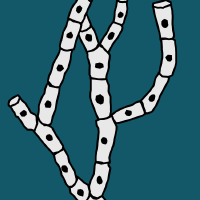Topic Menu
► Topic MenuTopic Editors



Interaction between Plants and Fungi and Oomycetes
Topic Information
Dear Colleagues,
Plant–fungal interactions are involved in various aspects of plants, the environment, agriculture, etc. Fungi can have both negative and positive effects on plant growth, and fungal pathogens causing plant diseases result in huge losses in crop yields every year. Therefore, how to reduce or eliminate the negative effects of fungi on plants is a hot topic of current research. At the same time, understanding the mechanisms of interaction between fungi and plants can also lay a scientific basis for protecting plants from fungi. The Special Issue will focus on both positive and negative modulations in plant morphology, metabolism, and health by plant-associated fungi, as well as on the effect of plant extracts on fungal survival.
Dr. Ana P. G. C. Marques
Dr. Nadia Massa
Dr. Santa Olga Cacciola
Topic Editors
Keywords
- plant–fungal interaction
- biocontrol
- agriculture
- plant diseases
- mycology
- oomycetes
- ecology of plants and fungi
Participating Journals
| Journal Name | Impact Factor | CiteScore | Launched Year | First Decision (median) | APC |
|---|---|---|---|---|---|

Agriculture
|
3.6 | 3.6 | 2011 | 17.7 Days | CHF 2600 |

Agronomy
|
3.7 | 5.2 | 2011 | 15.8 Days | CHF 2600 |

Crops
|
- | - | 2021 | 30.5 Days | CHF 1000 |

Journal of Fungi
|
4.7 | 4.9 | 2015 | 18.4 Days | CHF 2600 |

Plants
|
4.5 | 5.4 | 2012 | 15.3 Days | CHF 2700 |

MDPI Topics is cooperating with Preprints.org and has built a direct connection between MDPI journals and Preprints.org. Authors are encouraged to enjoy the benefits by posting a preprint at Preprints.org prior to publication:
- Immediately share your ideas ahead of publication and establish your research priority;
- Protect your idea from being stolen with this time-stamped preprint article;
- Enhance the exposure and impact of your research;
- Receive feedback from your peers in advance;
- Have it indexed in Web of Science (Preprint Citation Index), Google Scholar, Crossref, SHARE, PrePubMed, Scilit and Europe PMC.

